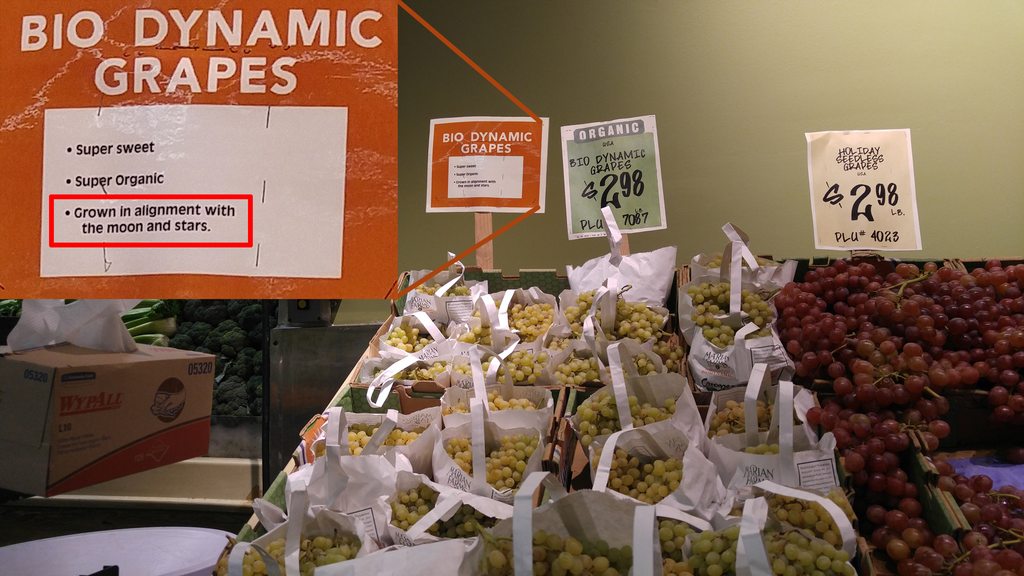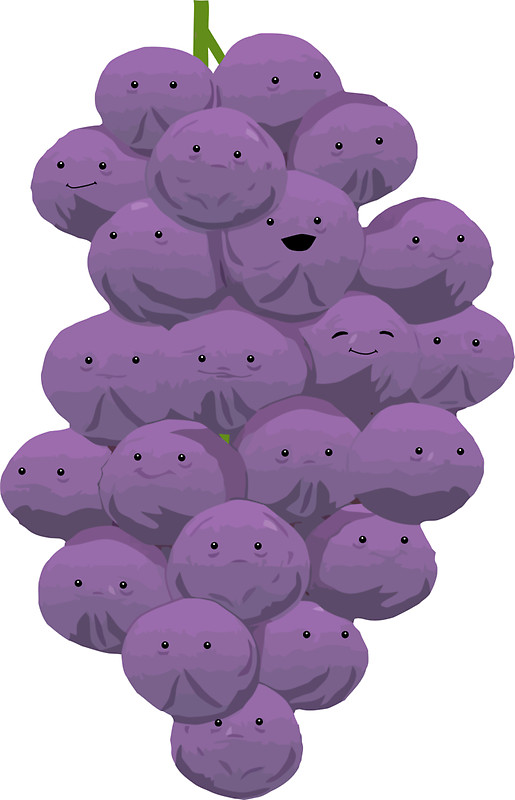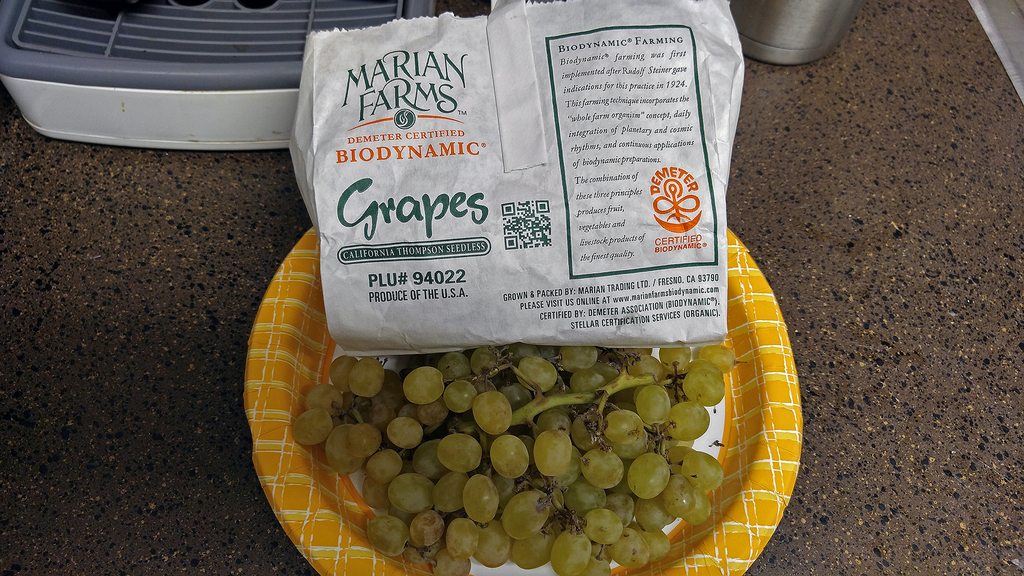-
We welcome content that is not political, divisive, or offensive. If we feel your content leans this way or has the potential to, it may be removed at any time. A hot pepper forum is not the place for such content. Thank you for respecting the community!
-
✅ Expert and friendly hot pepper grow advice.
✅ The latest information on hot pepper varieties.
✅ Reliable seed trading.
✅ Hot sauce recipes and food safety guidance.
✅ Hot sauce business tips for startups.
🌶️ And more!
It's all here, at The Hot Pepper! The Internet's original hot pepper community! Est. 2004.
You are using an out of date browser. It may not display this or other websites correctly.
You should upgrade or use an alternative browser.
You should upgrade or use an alternative browser.
Bio dynamic grapes grown in alignment with the moon and stars.
- Thread starter TXCG
- Start date
Its horseshit they didn't grown it in alignment with the black hole at the center of our galaxy.
Wow, I hope its just a parody because I feel bad for the suckers that actually buy it for that reason
"If there's a single trend in how to grow wine grapes, it's biodynamics—admittedly an odd development for an approach based on a series of lectures given in the 1920s by Austrian philosopher Rudolf Steiner.
What is biodynamics?
At its most basic, the biodynamic approach to grape-growing sees the vineyard as an ecological whole: not just rows of grapevines, but the soil beneath them—an organism in its own right—and the other flora and fauna in the area, growing together interdependently.
Where biodynamics differs from other forms of organic or sustainable agriculture is in its idea that farming can be attuned to the spiritual forces of the cosmos. This might mean linking sowing and harvesting to the phases of the moon or the positions of the planets; it also might mean burying cow manure in a cow's horn over the winter, unearthing it in the spring, diluting a minute amount of the substance in 34 liters of water, "dynamizing" it by stirring it by hand in alternating directions for an hour or so and then spraying the mixture over one's vineyard.
Does it work?
Well, adherents of biodynamics think so, though the success of the practice is impossible to quantify: Scientific measurement of the spiritual is a contradiction in terms. The most effective argument for biodynamics is that wines produced employing it are more evocative of the place they're grown—and, consequently, better. Consider that converts to biodynamics include some of the most significant high-end wine producers today, such as Lalou Bize-Leroy of Domaine Leroy in Burgundy, Peter Sisseck of Dominio de Pingus in Spain, and Olivier Humbrecht of Alsace's Zind-Humbrecht. Also, a growing number of large-scale producers—Maison Joseph Drouhin in Burgundy, DeLoach Vineyards in Sonoma County—are experimenting with biodynamics. Finally, regardless of the more outré aspects of the biodynamic approach, the intense attention it forces growers to pay in the vineyard can't be anything but good."
What is biodynamics?
At its most basic, the biodynamic approach to grape-growing sees the vineyard as an ecological whole: not just rows of grapevines, but the soil beneath them—an organism in its own right—and the other flora and fauna in the area, growing together interdependently.
Where biodynamics differs from other forms of organic or sustainable agriculture is in its idea that farming can be attuned to the spiritual forces of the cosmos. This might mean linking sowing and harvesting to the phases of the moon or the positions of the planets; it also might mean burying cow manure in a cow's horn over the winter, unearthing it in the spring, diluting a minute amount of the substance in 34 liters of water, "dynamizing" it by stirring it by hand in alternating directions for an hour or so and then spraying the mixture over one's vineyard.
Does it work?
Well, adherents of biodynamics think so, though the success of the practice is impossible to quantify: Scientific measurement of the spiritual is a contradiction in terms. The most effective argument for biodynamics is that wines produced employing it are more evocative of the place they're grown—and, consequently, better. Consider that converts to biodynamics include some of the most significant high-end wine producers today, such as Lalou Bize-Leroy of Domaine Leroy in Burgundy, Peter Sisseck of Dominio de Pingus in Spain, and Olivier Humbrecht of Alsace's Zind-Humbrecht. Also, a growing number of large-scale producers—Maison Joseph Drouhin in Burgundy, DeLoach Vineyards in Sonoma County—are experimenting with biodynamics. Finally, regardless of the more outré aspects of the biodynamic approach, the intense attention it forces growers to pay in the vineyard can't be anything but good."
Super galactic grapes, why not?
i hate this.
Paying attention to the lunar calendar might mean better planting times and, as D3's excerpt points out, this ethos does mean more attention is being given to the plants. A holistic approach to one's garden does make sense, given that every plant therein is both taking from and giving back to the soil they all use.
Ultimately though, the cowhorn thing is witchcraft and the celestial alignment thing is astrology, both of which are bullcrap of the highest order.
Ultimately though, the cowhorn thing is witchcraft and the celestial alignment thing is astrology, both of which are bullcrap of the highest order.
The act of adding manure to the soil is good, sure. The act of then digging it up again is weird. It's taking potential nutrients out of the soil, probably disturbing roots in the process, just to add them back again in a slightly different form after a nonsensical ritual is performed.
Ok, not really off-topic, but when I was a pup I was a long-hair musician type, and my hippie-dippie hairdresser told me that if you want your hair to grow twice as fast to have it trimmed on every full moon. After a year of her cutting my hair I could sit on it.
That being said, I don't go for the witchiepoo aspect of it all, there's physics in there somewhere.....
That being said, I don't go for the witchiepoo aspect of it all, there's physics in there somewhere.....
t0mato said:Oh yeah.....there's definitely a logical explanation for biodynamics.
It gets people to buy grapes at the grocery store?


 Yea they even bury a female cow horn packed with manure on the winter solstice in position with the north star
Yea they even bury a female cow horn packed with manure on the winter solstice in position with the north star 
